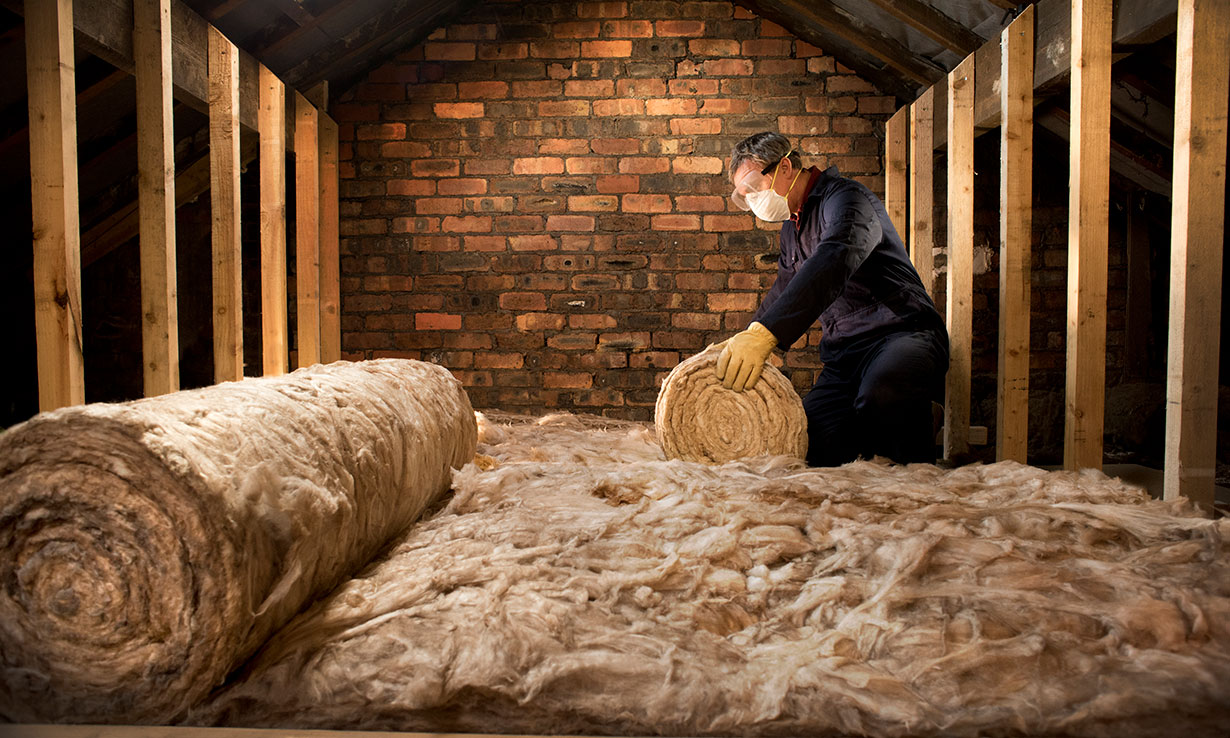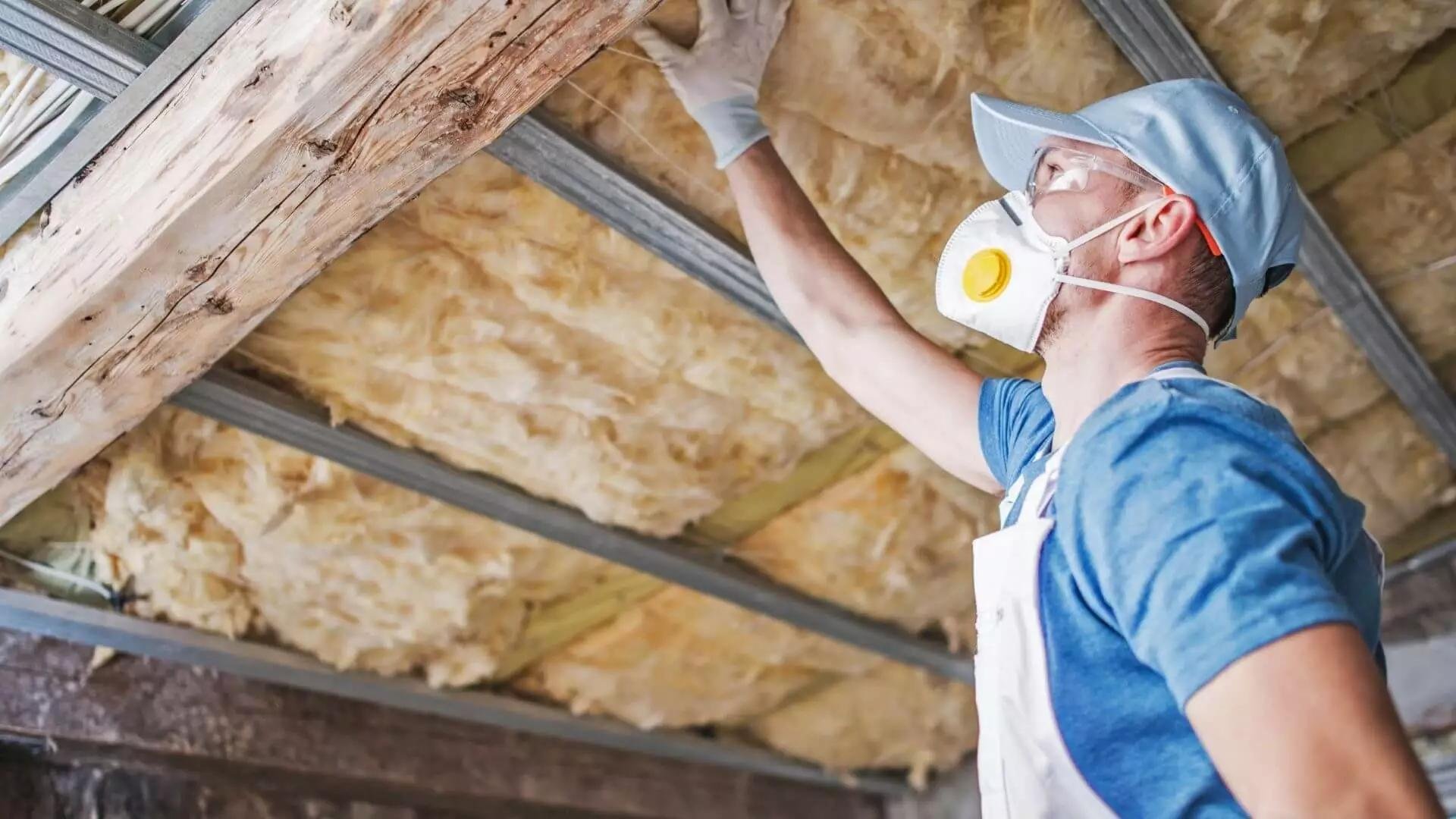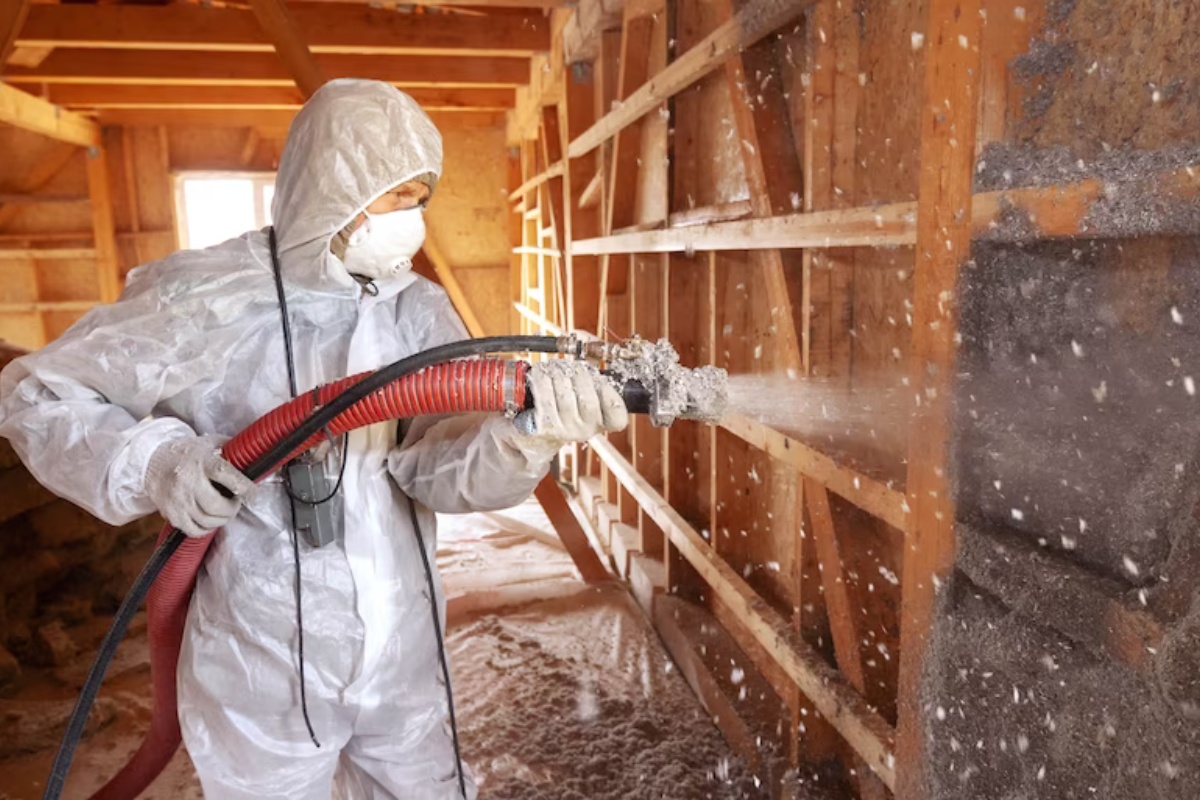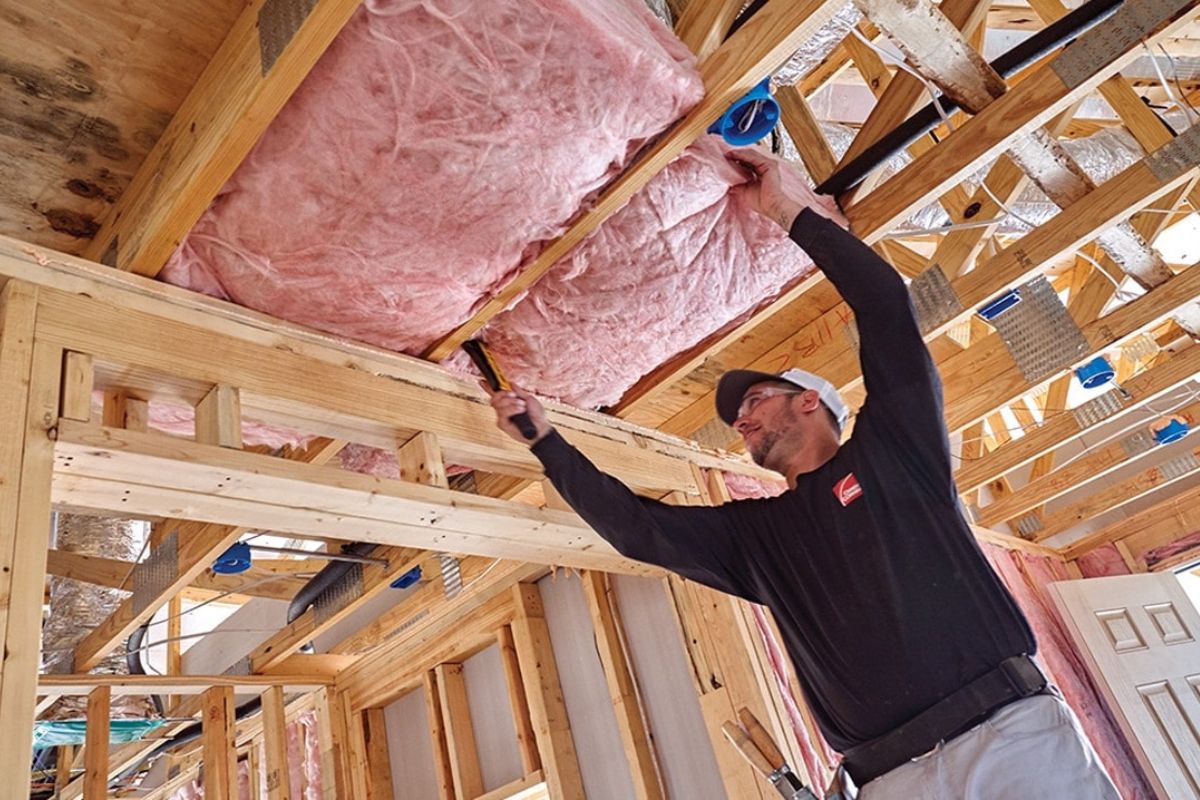

Articles
How Do You Qualify For Insulation Grant
Modified: December 7, 2023
Learn how to qualify for an insulation grant and save on energy bills with helpful articles. Discover eligibility criteria and application process to benefit from insulation grants.
(Many of the links in this article redirect to a specific reviewed product. Your purchase of these products through affiliate links helps to generate commission for Storables.com, at no extra cost. Learn more)
Introduction
Welcome to our comprehensive guide on how to qualify for an insulation grant. In today’s modern world, energy efficiency has become a top priority for homeowners. Insulation plays a crucial role in reducing energy consumption, improving comfort, and minimizing the impact on the environment. However, the cost of insulation installation can be a barrier for many homeowners.
Fortunately, governments and utility companies offer various insulation grants to help mitigate the financial burden and encourage homeowners to enhance the energy efficiency of their properties. These grants provide financial assistance and incentives to make insulation upgrades more accessible and affordable.
In this article, we will explore the eligibility criteria for insulation grants and provide a step-by-step guide on how to apply. Whether you are a homeowner or a landlord, understanding the qualifications and application process is instrumental in accessing these valuable grants.
Before we delve into the specific requirements and application process, let’s first understand the significance of insulation and its benefits.
Key Takeaways:
- Insulation grants offer financial assistance, energy savings, improved comfort, environmental sustainability, increased property value, and health benefits. They make insulation upgrades accessible and rewarding for homeowners, contributing to a sustainable future.
- Applying for an insulation grant involves thorough research, gathering necessary documents, and submitting the application. Open communication with the grant program and patience during the approval process are essential for success.
What is an insulation grant?
An insulation grant is a financial incentive provided by government agencies or utility companies to assist homeowners in upgrading their insulation systems. It is designed to promote energy efficiency and reduce greenhouse gas emissions by encouraging the installation of insulation materials in residential properties.
Insulation grants aim to alleviate the financial burden of insulation projects, making it more accessible for homeowners who may not have the means to cover the full cost of installation. These grants can help offset the expenses associated with purchasing insulation materials, hiring contractors, and completing the installation process.
Insulation grants can come in the form of cash incentives, rebates, tax credits, or low-interest loans. The availability and type of grant may vary depending on your location and the specific programs offered by government agencies or utility companies in your area.
The primary goal of insulation grants is to promote energy efficiency and reduce energy consumption. By improving the thermal performance of homes, insulation grants help homeowners save money on utility bills by reducing the need for excessive heating or cooling. Additionally, these grants contribute to a more sustainable future by reducing the overall energy demand and minimizing carbon emissions.
It is important to note that insulation grants typically have specific eligibility criteria and application processes. These requirements are put in place to ensure that the grants are allocated to those who need them the most and that the insulation upgrades meet the necessary standards for energy efficiency.
Now that we have a better understanding of what insulation grants are, let’s explore the importance of insulation and why it is beneficial for homeowners to consider upgrading their insulation systems.
Importance of insulation
Insulation is a critical component of any home that significantly impacts energy efficiency, indoor comfort, and overall sustainability. Installing proper insulation can offer several benefits, making it a worthwhile investment for homeowners. Here are the key reasons why insulation is important:
- Energy efficiency: Insulation acts as a barrier against heat transfer, helping to keep the indoor temperature stable. By reducing the amount of heat that escapes in winter and enters in summer, insulation minimizes the reliance on heating and cooling systems. This results in lower energy consumption and reduced utility bills.
- Improved comfort: Insulation plays a vital role in maintaining a comfortable indoor environment. It helps to keep the indoor temperature consistent, preventing drafts and cold spots. Insulation also reduces noise transmission, creating a quieter living space.
- Health benefits: Proper insulation not only regulates temperature but also helps to control humidity levels. By preventing moisture build-up, insulation inhibits the growth of mold, mildew, and bacteria, improving indoor air quality and reducing the risk of respiratory issues.
- Sustainability: Insulation contributes to a more sustainable future by reducing the carbon footprint. When houses are well-insulated, less energy is required for heating and cooling, resulting in reduced greenhouse gas emissions. Insulation also helps to conserve natural resources by minimizing the need for additional energy production.
- Increased property value: Upgrading insulation can enhance the value of your property. Energy-efficient homes are in high demand among buyers, and having proper insulation can be a selling point. It demonstrates that the property has been well-maintained and offers long-term energy savings.
Considering the numerous benefits insulation provides, it is clear why it is essential for homeowners to have a well-insulated home. However, the cost of insulation installation can be a barrier for many. This is where insulation grants come into play, helping homeowners offset the expenses and make insulation upgrades more affordable.
Now that we understand the importance of insulation, let’s explore the eligibility criteria for insulation grants to determine if you qualify for this financial assistance.
Eligibility criteria for insulation grant
While insulation grants are designed to assist homeowners in upgrading their insulation systems, they typically have specific eligibility criteria that need to be met. These criteria help ensure that the grants are allocated to those who need them the most and that the insulation upgrades meet the necessary standards for energy efficiency. Here are some common eligibility criteria that you may encounter when applying for an insulation grant:
- Income requirements: Some insulation grants are income-based, meaning that homeowners must meet certain income thresholds to be eligible. The purpose of these requirements is to provide assistance to those with limited financial means. Income requirements can vary depending on the specific grant program and your location.
- Property requirements: Certain insulation grants may have property-specific requirements. For example, the grant may only be available for owner-occupied primary residences and not for rental properties or vacation homes. Additionally, the property may need to meet certain energy efficiency standards or be eligible for other energy-saving measures.
- Age requirements: Some insulation grants may have age restrictions, targeting specific age groups such as low-income seniors or households with young children. These grants aim to prioritize vulnerable populations who may face increased challenges in maintaining a comfortable and energy-efficient home.
- Prioritization criteria: In some cases, insulation grants may use prioritization criteria to determine who receives funding first. This could include factors such as the age of the property, the level of existing insulation, or the area’s climate. These criteria help ensure that grants are distributed strategically, addressing properties that will benefit the most from insulation upgrades.
It is important to note that while these eligibility criteria are common, they can vary depending on the specific insulation grant program and the agency or organization administering it. Therefore, it is crucial to research and review the specific requirements for the grant you are interested in before proceeding with the application process.
Now that you have a general understanding of the eligibility criteria for insulation grants, it’s time to explore the benefits of these grants and how they can help homeowners improve their properties’ energy efficiency.
Income requirements
Income requirements are a common eligibility criterion for insulation grants. These requirements ensure that grants are targeted towards homeowners who may not have the financial means to cover the full cost of insulation upgrades. The specific income thresholds and criteria for eligibility can vary depending on the grant program and the location. Here are a few points to consider regarding income requirements:
- Income brackets: Different insulation grants may have different income brackets that determine eligibility. For example, a grant may be available to homeowners whose income falls below a certain percentage of the area’s median income. Common income brackets include low-income, moderate-income, and middle-income households.
- Documentation: When applying for an insulation grant, you will typically be required to provide documentation to prove your income. This may include recent pay stubs, tax returns, or other financial statements. It is essential to ensure that you have the necessary documentation prepared and organized to support your application.
- Household size: Income requirements often take into account the size of your household. The income limits may increase with the number of individuals in your household. This is done to accommodate for larger families who may have higher expenses and less disposable income.
- Regional variation: Income requirements can vary based on the location of your property. Different regions may have different standards for determining income eligibility based on cost of living and other factors. It is important to research the specific income requirements for the grant program available in your area.
- Reviewing eligibility: Before applying for an insulation grant, carefully review the income requirements to ensure that you fall within the specified income range. If your income exceeds the eligibility criteria, you may not be eligible for the grant. However, there may be other energy efficiency programs or incentives available that you can explore.
Keep in mind that income requirements are just one aspect of the overall eligibility criteria for insulation grants. It’s important to consider other factors such as property requirements, age requirements, and prioritization criteria if they apply. By understanding the specific eligibility criteria, you can determine if you qualify for an insulation grant and proceed with the application process.
Now that we have explored income requirements, let’s move on to understanding the property requirements for insulation grants.
Property requirements
In addition to income requirements, insulation grants often have specific property requirements that determine eligibility. These requirements ensure that grants are allocated to properties that will benefit the most from insulation upgrades and meet the necessary standards for energy efficiency. Here are some common property requirements to consider:
- Primary residences: Many insulation grants are available only for owner-occupied primary residences. This means that rental properties, vacation homes, or secondary residences may not be eligible for the grant. The goal is to encourage homeowners to improve the energy efficiency of their primary living spaces.
- Energy efficiency standards: Some insulation grants have specific energy efficiency standards that the property must meet to qualify for the grant. This may involve conducting an energy assessment or obtaining an energy audit to identify areas where insulation upgrades are needed. The assessment may also consider the current insulation level and recommend the type and amount of insulation required.
- Age of the property: Certain insulation grants prioritize older properties that may be lacking adequate insulation. This is because older homes often have lower energy efficiency levels due to outdated insulation materials or insufficient insulation coverage. Grant programs may specify a minimum age for the property to qualify for assistance.
- Location: The location of the property can also impact eligibility for insulation grants. Specific grants may be available only in certain regions or areas where energy conservation is a priority. It is important to research grant programs specific to your location to determine if your property is eligible.
- Compliance with building codes: Grants may require that insulation upgrades comply with local building codes and regulations. This ensures that the insulation installation is done correctly and meets the necessary safety standards. It is essential to consult local building authorities or the grant program guidelines to understand the specific requirements.
Understanding and meeting the property requirements is crucial when applying for an insulation grant. These requirements help ensure that the grants are distributed to properties that will benefit the most from energy efficiency improvements. By considering the property-specific criteria, you can determine if your property meets the necessary standards for the grant program and proceed with the application process.
Now that we have examined the income and property requirements, let’s explore the age requirements for insulation grants.
Age requirements
Age requirements are often a factor when determining eligibility for insulation grants. These requirements aim to target specific age groups, such as low-income seniors or households with young children, who may face increased challenges in maintaining a comfortable and energy-efficient home. Here are some key points to consider regarding age requirements for insulation grants:
- Senior-specific grants: Some insulation grants specifically target low-income seniors. These grants may have age requirements, typically set at 60 years or older. The goal is to assist older individuals who may be on fixed incomes and have higher energy needs due to health conditions or a greater susceptibility to cold temperatures.
- Households with young children: Certain grants may prioritize households with young children. Young children are more vulnerable to extreme temperatures and may require a more comfortable and energy-efficient living environment. The age range for eligibility can vary, but it is typically focused on children under the age of five.
- Energy poverty programs: In some cases, insulation grants may focus on addressing energy poverty in specific demographics, such as low-income families with children or individuals with disabilities. These programs aim to alleviate the burden of high energy costs on vulnerable groups and promote energy-efficient living conditions.
- Age restrictions: It is important to note that not all insulation grants have age requirements. Some grants are available to homeowners of all ages who meet the income and property eligibility criteria. It is essential to thoroughly research the specific grant program to understand if age plays a role in determining eligibility.
Age requirements, when applicable, help ensure that insulation grants are allocated to those who may be most susceptible to the impacts of inadequate insulation, such as seniors and young children. These requirements consider the specific needs and vulnerabilities of certain age groups to provide targeted assistance and improve their overall living conditions.
Now that we have explored the income, property, and age requirements for insulation grants, let’s move on to understanding the benefits of these grants and how they can help homeowners improve their properties’ energy efficiency.
Benefits of insulation grants
Insulation grants offer homeowners a range of benefits that make upgrading their insulation systems a smart and cost-effective decision. Here are the key advantages of utilizing insulation grants to improve your home’s energy efficiency:
- Financial assistance: Insulation grants provide homeowners with financial assistance, making insulation upgrades more affordable. These grants can offset the costs associated with purchasing insulation materials, hiring contractors, and completing the installation process. They can help alleviate the financial burden and encourage homeowners to invest in energy-saving measures.
- Energy savings: Upgrading your insulation can lead to significant energy savings. By improving the thermal performance of your home, insulation helps to reduce the amount of heat loss in winter and heat gain in summer. This means you’ll rely less on heating and cooling systems, resulting in lower energy consumption and reduced utility bills. Insulation grants enable homeowners to make these energy-saving upgrades without incurring high upfront costs.
- Improved comfort: Proper insulation enhances the comfort of your home by maintaining a consistent and comfortable indoor temperature. It helps to prevent drafts, cold spots, and excessive heat, creating a more pleasant living environment. With insulation grants, homeowners can improve their comfort levels without breaking the bank.
- Environmental impact: Insulation grants contribute to a more sustainable future by reducing the carbon footprint. When your home is well-insulated, the need for excessive heating and cooling is minimized. This results in lower greenhouse gas emissions and less strain on natural resources. By taking advantage of insulation grants, homeowners actively contribute to environmental preservation.
- Increased property value: Upgrading your home’s insulation can also enhance its value. Energy-efficient homes are in demand among buyers, and having proper insulation can be a selling point. It showcases that your property is well-maintained, offers long-term energy savings, and aligns with environmental concerns. Insulation grants provide an opportunity to make your home more attractive to potential buyers and increase its market value.
- Health benefits: Insulation not only improves energy efficiency but also promotes a healthier living environment. By minimizing drafts and controlling moisture levels, insulation helps to prevent the growth of mold, mildew, and allergens. This leads to improved indoor air quality and reduces the risk of respiratory issues and allergies. Insulation grants enable homeowners to prioritize the health and well-being of their households.
By taking advantage of insulation grants, homeowners can reap the benefits of energy savings, improved comfort, environmental conservation, increased property value, and better health. These grants make insulation upgrades accessible and affordable, enabling homeowners to make a positive impact on both their households and the planet.
Now that we understand the benefits of insulation grants, let’s move on to the practical steps involved in applying for these grants.
How to apply for an insulation grant
Applying for an insulation grant requires some research and preparation, but the process is generally straightforward. Here is a step-by-step guide on how to apply for an insulation grant:
Read more: How Do You Dispose Of Insulation
Step 1: Research available grants
Start by researching the insulation grants available in your area. Check with your local government agencies, utility companies, and non-profit organizations that offer energy efficiency programs. Visit their websites or reach out to their customer service departments to gather information about the grants they provide, eligibility criteria, and application procedures. Make a list of the grants that align with your eligibility and needs.
Step 2: Gather necessary documents
Once you have identified the insulation grants you are interested in, gather the necessary documents to support your application. Common documents may include proof of income (such as pay stubs or tax returns), proof of property ownership, energy assessment reports, and identification documents. It’s essential to have these documents readily available and organized to streamline the application process.
Step 3: Submit the application
Follow the application instructions provided by the grant program. This may involve filling out an online application form, mailing a physical application package, or submitting documents through a designated portal. Take your time to complete the application accurately and provide all the required information and supporting documents. Review your application before submission to ensure its completeness and correctness.
Approval process and timeline
After submitting your application, the grant program will review it to determine your eligibility. The approval process and timeline can vary depending on the specific grant program and the volume of applications received. It is important to be patient and allow sufficient time for the review process. Some grant programs may require additional information or documentation during the review, so make sure to respond promptly to any requests or inquiries.
If your application is approved, you will receive notification from the grant program. The notification may include information on the amount of grant funding you are eligible to receive and any additional steps you need to take, such as selecting an approved contractor or scheduling an insulation assessment. Follow the instructions provided to proceed with the next steps in the project implementation.
If your application is not approved, don’t be discouraged. You can explore other insulation grant programs or consider alternative energy efficiency measures. There may be additional programs or incentives available that can help you achieve your goals of improving your home’s energy efficiency.
Remember to keep copies of all application materials and communication with the grant program for reference.
By following these steps and being diligent in the application process, you can increase your chances of accessing an insulation grant to assist with your home’s energy efficiency upgrades.
Now that you know how to apply for an insulation grant, let’s conclude our guide on qualifying for an insulation grant.
Check with your local government or energy efficiency programs to see if you qualify for insulation grants. Many programs offer financial assistance for improving home insulation.
Read more: How Do You Install Insulation In Walls
Step 1: Research available grants
The first step in applying for an insulation grant is to research the available grants in your area. This research will help you identify the grants that align with your needs and eligibility criteria. Here’s how to go about it:
1. Government agencies: Start by checking with local, state, and federal government agencies that offer energy efficiency programs. Visit their websites or contact their energy or environmental departments to find information about the insulation grants they provide. These grants may be specifically tailored for residents in your area and can offer significant financial assistance.
2. Utility companies: Many utility companies offer insulation grants as part of their energy efficiency initiatives. Check the websites of your utility providers or contact their customer service departments to inquire about any grants or incentives they offer for insulation upgrades. These programs may include cash incentives, rebates, or subsidized insulation installation services.
3. Non-profit organizations: Some non-profit organizations focus on promoting energy efficiency and provide grants or assistance for insulation projects. Research local non-profit organizations that are dedicated to environmental sustainability and energy conservation. These organizations may have funding programs or partnerships that offer financial assistance for insulation upgrades.
4. Online databases: Utilize online databases and resources that compile information about various energy efficiency grants and programs. These databases often allow you to search for grants based on your location and specific criteria. These platforms provide a centralized source of information for multiple grant options, making it easier to compare and choose the most suitable one.
5. Community resources: Check with local community centers, energy advocacy groups, and homeowner associations for any insulation grants or programs available in your area. These organizations may collaborate with government agencies or utility companies to offer additional resources and information about insulation grants. Attend community meetings or workshops focused on energy efficiency to learn more about available grants.
6. Eligibility requirements: While conducting your research, pay close attention to the eligibility requirements for each grant. Consider factors such as income limits, property type (owner-occupied or rental), property age, and energy efficiency standards. Ensuring that you meet the eligibility criteria will help you refine your options and focus on grants that you are more likely to qualify for.
7. Take notes: As you gather information about different grants, make sure to take notes of the eligibility criteria, application process, and any important deadlines. This will help you stay organized and ensure you have all the necessary information when it’s time to apply.
By thoroughly researching available insulation grants, you can identify the programs that are most suitable for your needs and increase your chances of accessing financial assistance for your insulation upgrades. Once you have a list of potential grants, you can proceed to the next steps in the application process.
Next, let’s move on to step 2: Gathering necessary documents.
Step 2: Gather necessary documents
Once you have identified the insulation grants that you are interested in applying for, it’s time to gather the necessary documents to support your application. Gathering the required documentation in advance will streamline the application process and ensure that you have all the necessary information readily available. Here’s what you need to do:
1. Review the grant requirements: Take a careful look at the documentation requirements specified by each grant program. Common documents may include proof of income, proof of property ownership or occupancy, energy assessment reports, and identification documents. Make note of the specific documents required for each grant.
2. Proof of income: Most insulation grants have income restrictions, so you will likely need to provide proof of income. This may include recent pay stubs, tax returns, or other financial statements. Ensure that you have these documents readily available and current for the application process.
3. Property documentation: Depending on the grant program, you may need to provide proof of property ownership or occupancy. This could include documents such as a deed, mortgage statement, rental agreement, or utility bills in your name. Make sure you have these documents accessible and ready to submit as required.
4. Energy assessment reports: Some grants may require an energy assessment of your property to identify areas that require insulation upgrades. This assessment can be conducted by a certified energy auditor or a qualified professional. If an energy assessment is required, gather any existing reports or schedule an assessment to have the necessary documentation ready for your application.
5. Identification documents: Grants often require you to provide identification documents to verify your identity and residence. This could include copies of your driver’s license, passport, or other government-issued identification. Ensure that these documents are valid and up to date.
6. Organize the documents: Once you have gathered all the required documents, organize them in a logical and easily accessible manner. Create a folder or file on your computer to keep digital copies, and if necessary, make hard copies of the documents and keep them in a secure place. Being organized will help you quickly access the required documents during the application process.
7. Make copies: It’s always a good idea to make copies of all the documents you gather. This way, you have backup copies in case any documents get lost or damaged. Having copies also allows you to refer back to the documents as needed during the application process.
By gathering the necessary documents in advance, you will be well-prepared to complete the application process smoothly and efficiently. Having all the required information at your fingertips will save time and make the overall process much more manageable.
Now that you have gathered the necessary documents, you can move on to step 3: submitting the application.
Step 3: Submit the application
After conducting thorough research and gathering the necessary documents, it’s time to submit your application for the insulation grant. The application process may vary depending on the grant program and the organization administering it. To ensure a smooth and successful application, follow these steps:
1. Read the application guidelines: Carefully review the application guidelines provided by the grant program. This will give you a clear understanding of the application requirements, deadlines, and any specific instructions you need to follow. Ensure that you meet all the criteria before proceeding.
2. Complete the application form: Fill out the application form accurately and completely. Provide all the requested information, including personal details, property information, income information, and any other relevant data. Double-check to ensure that there are no errors or missing information on the form.
3. Attach the supporting documents: Compile all the necessary supporting documents as specified in the application guidelines. This may include proof of income, property documentation, energy assessment reports, identification documents, or any other documents requested by the grant program. Ensure that you include all the required documents and that they are legible and up to date.
4. Review the application: Before submitting the application, take the time to review it thoroughly. Double-check all the information provided, including your contact details, property details, and attached documents. Make sure there are no spelling mistakes or missing information that could potentially delay the application process.
5. Submit the application: Submit your application according to the instructions provided by the grant program. This could involve submitting the application online through a designated portal, mailing a physical application package, or delivering it in person to a specific location. Pay attention to any specified deadlines and ensure that you submit the application within the given timeframe.
6. Keep copies of the application: After submitting the application, make copies of all the documents you submitted for your records. These copies can serve as proof of your application and can be helpful for reference purposes if needed in the future.
7. Follow up if necessary: Once your application is submitted, you may need to wait for a response from the grant program. If you do not receive any communication within the specified timeframe, you can follow up with the grant program to inquire about the status of your application. Keep records of any correspondence and note any important information shared during the follow-up process.
By carefully completing and submitting your application, you maximize your chances of receiving the insulation grant. Following the application process as outlined by the grant program ensures that your application is well-prepared and that you provide all the necessary information and documentation.
Now that you have submitted your application, you can await a response from the grant program regarding your eligibility and the next steps in the process.
Next, let’s move on to understanding the approval process and timeline for insulation grants.
Approval process and timeline
After submitting your application for an insulation grant, it will go through an approval process to determine your eligibility. The approval process and timeline can vary depending on the specific grant program and the volume of applications received. Here’s what you can expect during the approval process:
- Initial review: Once your application is received, it will undergo an initial review. This review ensures that all the necessary information and documentation have been provided. The grant program may reach out to you if any additional information or clarification is needed.
- Evaluation of eligibility: After the initial review, your application will be evaluated to assess your eligibility for the insulation grant. The evaluation will consider factors such as income requirements, property requirements, and any age-specific criteria. The grant program will verify the information provided in your application and supporting documents.
- Additional documentation: Depending on the grant program, you may be required to provide additional documentation during the evaluation process. The grant program may request more detailed income verification, property documentation, or energy assessment reports. It is important to respond promptly to any requests to avoid delays in the application process.
- Approval decision: Once your eligibility has been evaluated, the grant program will make a final decision regarding the approval of your application. This decision will be based on your fulfillment of the grant’s eligibility criteria and the availability of funds. If approved, you will receive a notification indicating the amount of grant funding you are eligible to receive.
- Notification: The grant program will notify you of the outcome of your application. If approved, the notification will outline the next steps you need to take, such as selecting an approved contractor or scheduling an insulation assessment. The notification may also provide information on any additional requirements or conditions that need to be met.
- Timeline: The timeline for the approval process can vary widely depending on the grant program and the number of applications received. Some grants may have a relatively quick turnaround time, while others may take several weeks or even months. It is important to refer to the grant program’s guidelines or contact their customer service for an estimated timeline. Patience is essential during this stage of the process.
It is crucial to maintain open communication with the grant program throughout the approval process. If you have any questions or concerns, don’t hesitate to reach out for clarification or updates on the status of your application.
Remember to keep a record of all communication, including emails, letters, or phone conversations, as these may be useful for reference or follow-up purposes.
Once the approval is received, and the next steps are outlined, you can proceed with implementing the insulation upgrades according to the requirements set forth by the grant program.
Now that we have covered the approval process and timeline, let’s conclude our guide on applying for an insulation grant.
Read more: How Do You Insulate A Garage Door
Conclusion
Congratulations! You have reached the end of our comprehensive guide on how to qualify for an insulation grant. Understanding the requirements and application process for insulation grants is crucial in accessing financial assistance to improve your home’s energy efficiency. Here’s a recap of what we covered:
We began by explaining what an insulation grant is and highlighting its importance in promoting energy efficiency, improving comfort, and reducing environmental impact. Insulation grants are financial incentives provided by government agencies or utility companies to help homeowners offset the cost of upgrading their insulation systems.
We then discussed the eligibility criteria for insulation grants, including income requirements, property requirements, and age requirements. These criteria help ensure that grants are allocated to those who need them the most and that insulation upgrades meet the necessary standards for energy efficiency.
Next, we explored the benefits of insulation grants, including financial assistance, energy savings, improved comfort, environmental sustainability, increased property value, and health benefits. These benefits make insulation upgrades more accessible and rewarding for homeowners.
We provided a step-by-step guide on how to apply for an insulation grant. The process involves researching available grants, gathering necessary documents, and submitting the application. We emphasized the importance of carefully reviewing application guidelines, completing the form accurately, attaching relevant documents, and reviewing the application before submission.
Finally, we discussed the approval process and timeline, highlighting the initial review, evaluation of eligibility, additional documentation if necessary, approval decision, and notification. We emphasized the importance of maintaining open communication with the grant program and keeping records of all correspondence.
By following these steps and being diligent throughout the application process, you increase your chances of accessing an insulation grant and improving your home’s energy efficiency.
Remember, even if your application is not approved, don’t be discouraged. There may be alternative energy efficiency programs or incentives that you can explore. It’s always worthwhile to continue seeking ways to enhance the energy efficiency of your home.
We hope that this guide has provided you with valuable insights and guidance on qualifying for an insulation grant. By making your home more energy-efficient, you not only save money but also contribute to a sustainable and environmentally friendly future.
Good luck with your insulation grant application, and enjoy the benefits of an energy-efficient home!
Frequently Asked Questions about How Do You Qualify For Insulation Grant
Was this page helpful?
At Storables.com, we guarantee accurate and reliable information. Our content, validated by Expert Board Contributors, is crafted following stringent Editorial Policies. We're committed to providing you with well-researched, expert-backed insights for all your informational needs.












0 thoughts on “How Do You Qualify For Insulation Grant”